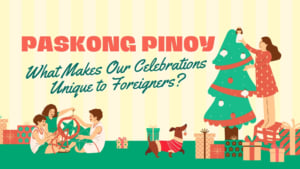When we think of Buwan ng Wika, we often celebrate the Filipino with poetry, dances, traditional clothing, and native cuisine. But beyond these are the stories of alamat, kuwentong bayan, epiko, and mitolohiya that our ancestors have whispered, passed from elders to children under the glow of a lampara, or through community gatherings where oral storytelling was the heartbeat of cultural life.
This Buwan ng Wika, let’s go beyond the basics and dive into the rich world of Filipino myths and legends.
Why Our Myths and Legends Matter More Than Ever

Filipino myths are more than just old stories. They are:
- Cultural blueprints that show what our ancestors valued: bravery, kindness, respect for elders, and nature.
- Linguistic treasures, preserving the rhythm, beauty, and expressions of native languages like Tagalog, Hiligaynon, Cebuano, and Ilocano.
- Social mirrors reflect how early Filipinos explained the unknown: thunder, volcanoes, eclipses, love, and death.
- Spiritual guides, connecting us with Bathala, diwata, and the sacredness of the land and sea.
In a modern world where oral traditions are fading and everything is fast-paced, these stories reconnect us to the wisdom, humor, and values of the past.
Famous Filipino Myths and Legends
A disobedient girl, cursed by her mother to have a thousand eyes after refusing to look for things, becomes the pineapple.
The first Filipinos emerged from a split bamboo, symbolizing humanity’s dual nature: strength and beauty, man and woman.
The mysterious guardian of Mount Makiling protects nature and punishes those who exploit it.
4. The Bakunawa and the Seven Moons
A sea dragon eats six moons and tries to devour the seventh. People make noise to stop it — explaining lunar eclipses.
5. The Aswang and Other Creatures
The manananggal, tikbalang, kapre, and tiktik haunt Filipino nightmares, especially in the provinces.
6. Tungkung Langit and Alunsina (Visayan creation myth)
Tungkung Langit (Pillar of the Sky) and Alunsina (The Lazy One) are deities whose quarrel led to the separation of the earth and heavens, creating the world we know.
A giant trapped between two mountains in Montalban to prevent them from colliding. When earthquakes happen, it is said he is struggling to free himself.
Word Search
Find these words:
What These Stories Tell Us About Being Filipino
Respect for Nature – Mountains, rivers, and trees are often considered sacred and are not resources to exploit, but living spirits to honor.
Family and Community – Many legends emphasize utang na loob, pakikisama, and the importance of doing good for others.
Language as Memory – These stories are best conveyed in the language in which they were born. The rhythm, humor, and emotion resonate more deeply when told in Filipino or regional languages.
Survival Through Storytelling – Myths are how we’ve passed down wisdom through wars, colonization, disasters, and diaspora. Even when written records were destroyed, the stories survived.
How You Can Keep These Stories Alive
- Read local myths and folktales.
- Tell these stories to kids in your family in your native dialect if possible.
- Write your alamat or remake one as a short film, comic, or podcast.
- Support local authors and illustrators who bring these stories to life.
Final Thoughts
As we celebrate Buwan ng Wika, remember that our language is not just grammar and spelling. It is memory, magic, and meaning. Our myths and legends prove that Filipinos have always had stories to tell of strength, sorrow, wonder, and wisdom.
So the next time you see the moon disappear, hear the wind howl through the mountains, or sit beneath a mango tree, remember: there’s a story there. And that story speaks in the language of our ancestors.




